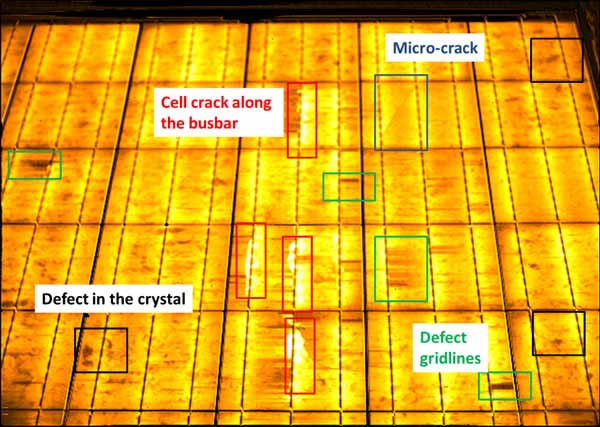

Electroluminescence (El) Testing For PV Modules
Electroluminescence (EL) Testing for PV Modules is a non-destructive imaging technique used to detect defects and evaluate the quality of photovoltaic (PV) modules, particularly crystalline silicon solar cells. It is widely used in manufacturing, quality control, and field diagnostics.
🔍 What is Electroluminescence (EL)?
Electroluminescence is the phenomenon where a material emits light in response to an electric current or strong electric field. In the context of PV modules:
-
When a forward bias is applied to a solar cell (i.e., it’s powered like an LED), it emits infrared light.
-
This emitted light is invisible to the naked eye but can be captured using specialized infrared cameras.
🎯 Purpose of EL Testing
EL testing is primarily used to:
-
Detect microcracks, broken cells, and interconnect issues
-
Identify potential-induced degradation (PID)
-
Check for soldering defects, cell mismatch, or manufacturing flaws
-
Assess transport or installation damage
-
Perform incoming quality control or post-installation evaluation
🛠️ Advantages of EL Testing
-
High spatial resolution
-
Detects hidden defects not visible in visual or infrared thermography
-
Non-destructive
-
Useful for research, production, and field testing

